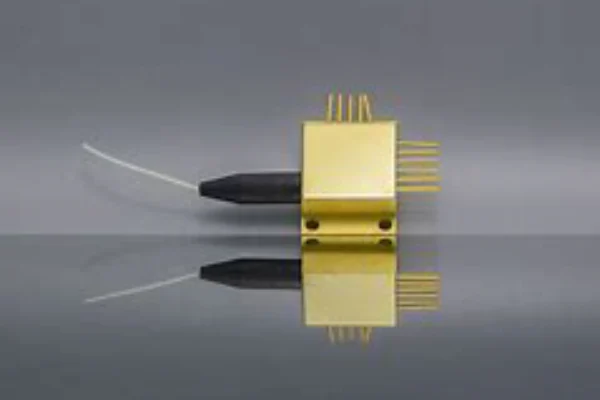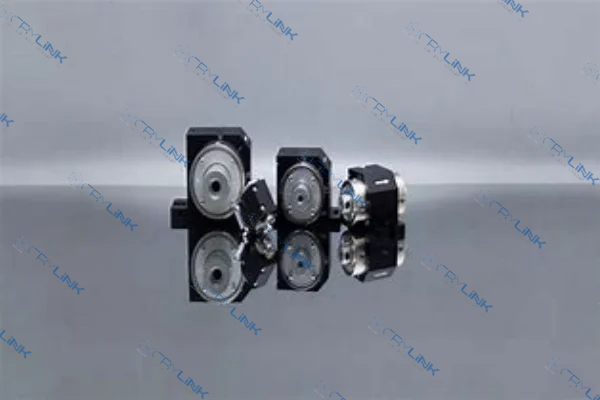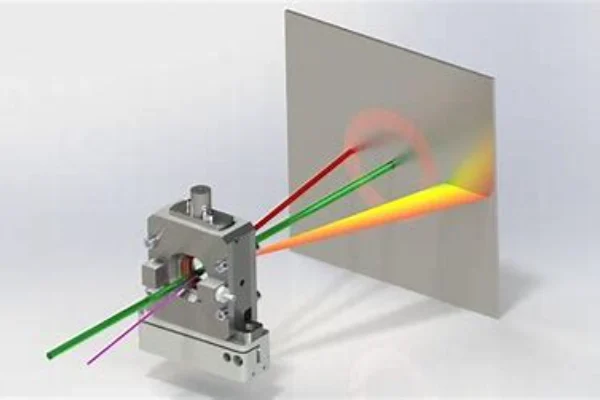Introduction
In the realm of optical measurements, the precision and accuracy of laser line width detection play a pivotal role. As we delve into the intricacies of spectral analysis, the significance of narrow linewidth lasers becomes evident. In applications ranging from gas sensing to high-resolution spectroscopy and coherent communication, maintaining linewidth stability is paramount. This article sheds light on the indispensable role of optical isolators in ensuring such stability and reducing noise.

The Importance of Laser Line Width in Precision Measurements
The realm of optical measurements has witnessed significant advancements, with laser line width emerging as a cornerstone in ensuring precision across various applications. One of the most critical areas where the accuracy of laser line width detection holds paramount importance is gas sensing. In this domain, even the slightest variations in the laser’s linewidth can drastically alter the outcomes. For instance, a minute shift in the linewidth can lead to substantial discrepancies in gas concentration readings.
Such discrepancies can have far-reaching implications, especially in industries where gas concentrations need to be monitored with utmost precision, such as in petrochemical plants or environmental monitoring stations. Therefore, maintaining a stable and narrow linewidth becomes non-negotiable to ensure the reliability of the readings.
Moving from gas sensing to the broader scientific arena, high-resolution spectroscopy stands out as another domain where the precision of laser line width is indispensable. Spectroscopy, a technique used to study the interaction between matter and electromagnetic radiation, relies heavily on the resolution.
The essence of this method lies in its ability to distinguish between different wavelengths of light, which, in turn, allows scientists and researchers to identify and analyze various elements and compounds. Here, a narrow linewidth laser acts as a catalyst in ensuring that the spectral lines are sharp and well-defined.
Such clarity is crucial because it enables accurate differentiation between closely spaced spectral lines, which could represent different elements or isotopes. In scenarios like studying the composition of distant stars or analyzing samples in a laboratory, the difference between two closely spaced lines could mean distinguishing between two different elements or compounds. Thus, the role of a laser with a narrow linewidth becomes pivotal in ensuring the accuracy of the results.

In the modern digital age, where communication forms the backbone of almost every operation, the importance of laser line width extends to coherent communication systems as well. These systems, which rely on lasers to transmit information, are directly influenced by the laser’s linewidth. Imagine a scenario where data is being transmitted over long distances using lasers.
If the linewidth of the laser isn’t stable or is too broad, the data can get distorted, leading to loss of information or errors in transmission. Such errors can be detrimental, especially in critical applications like satellite communication or undersea data cables. A laser with a stable and narrow linewidth ensures that the communication remains clear, uninterrupted, and free from external noise and interference. This stability translates to faster, more reliable communication channels, which are essential in today’s interconnected world.
In conclusion, the precision of laser line width detection plays a pivotal role across various domains, from gas sensing and high-resolution spectroscopy to coherent communication systems. Whether it’s ensuring accurate gas concentration readings, distinguishing between different spectral lines, or facilitating clear communication, a stable and narrow linewidth laser stands at the forefront of these operations. As technology continues to evolve, the emphasis on maintaining and improving this precision will only grow, underscoring the importance of laser line width in the future.

Role of Optical Isolators in Laser Line Width Detection
In the intricate world of optical measurements, the stability and precision of a laser’s linewidth stand as critical determinants of accuracy. At the heart of ensuring this stability lies the role of optical isolators, devices that have revolutionized the way we perceive and manage laser outputs. These isolators, often unsung heroes in the optical domain, serve a dual purpose. On one hand, they act as guardians, ensuring that the laser’s output remains unwavering and consistent. On the other, they shield the laser from the myriad of external noise and disturbances that can compromise its performance.
Diving deeper into the workings of optical isolators, one encounters the principle of non-reciprocity, which forms the foundation of their operation. This principle is both simple and profound. It allows light to journey in one direction, granting it passage, while staunchly blocking its return. Imagine a one-way street where vehicles can only move forward, with no chance of turning back.
Similarly, optical isolators ensure that any light that might be reflected or backscattered, perhaps due to imperfections or interactions with other elements, is prevented from retracing its path back into the laser cavity. This one-way mechanism is crucial because any returning light can destabilize the laser, causing fluctuations in its linewidth and, consequently, in the accuracy of the measurements it facilitates.
However, the challenges in optical measurements are not just about maintaining stability; they also revolve around combating noise. In this context, noise refers to any unwanted or spurious signals that can interfere with the laser’s output. Such noise can arise from a variety of sources, including external disturbances, electronic fluctuations, or even thermal effects.
Here again, optical isolators prove their mettle. By acting as gatekeepers, they effectively filter out this noise, ensuring that the laser’s output remains as pure and stable as intended. By preventing unwanted feedback, which is often a significant source of noise, optical isolators ensure that the laser beam remains coherent and free from disturbances.
Beyond noise reduction, the role of optical isolators extends to enhancing the overall linewidth stability of lasers. In many applications, from medical imaging to astronomical observations, the consistency of a laser’s linewidth can be the difference between a successful measurement and a failed one. A fluctuating linewidth can introduce errors, distortions, or ambiguities, all of which can compromise the integrity of the data obtained.
Optical isolators, by shielding the laser from external perturbations and feedback, play an instrumental role in ensuring that its linewidth remains stable. This stability, in turn, translates to measurements that are both accurate and consistent, regardless of the application.
In essence, optical isolators stand as silent sentinels in the world of optical measurements. Their role, though often overlooked, is pivotal in ensuring that lasers operate at their peak performance. By maintaining stability, reducing noise, and enhancing linewidth consistency, they ensure that the data we obtain from lasers, whether in scientific research, medical diagnostics, or communication systems, is of the highest quality and reliability. As we continue to push the boundaries of what lasers can achieve, the importance of optical isolators in safeguarding their performance will only grow.

Advancements in Optical Isolator Technology
As the demand for precision in optical measurements continues to soar, the evolution of optical isolator technology has been nothing short of remarkable. Today’s modern optical isolators have undergone significant advancements to meet the ever-increasing demands of diverse applications.
One of the key aspects of these advancements lies in the seamless integration of optical isolators with other optical components. This integration has paved the way for more compact and efficient optical systems, where multiple functionalities can be combined in a single setup. The synergy between optical isolators, modulators, amplifiers, and other components has unlocked new possibilities, allowing for the creation of sophisticated and versatile optical setups that cater to a wide range of applications.
Furthermore, miniaturization has been another transformative aspect of optical isolator technology. Thanks to the relentless efforts in research and development, optical isolators have become smaller and more compact than ever before. This miniaturization has opened up new avenues, particularly in the realm of portable and handheld devices.
The smaller form factor of modern optical isolators makes them highly suitable for integration into compact and portable instruments, ensuring that precision measurements can now be achieved even in the most challenging and remote environments. Whether it’s in field measurements, on-the-go diagnostics, or space-constrained laboratory setups, miniaturized optical isolators have proven to be indispensable components, empowering researchers, engineers, and professionals with cutting-edge optical solutions.

Conclusion
In the world of optical measurements, the precision of laser line width detection is of utmost importance. Optical isolators play a pivotal role in ensuring this precision by maintaining linewidth stability and reducing noise. As technology continues to evolve, we can expect even more advancements in optical isolator technology, further enhancing the accuracy and efficiency of laser systems.
FAQs
- What is the primary function of an optical isolator?
- An optical isolator allows light to pass in one direction while blocking it in the opposite direction, ensuring that reflected or backscattered light does not re-enter the laser cavity.
- Why is linewidth stability important in gas sensing?
- Linewidth stability is crucial in gas sensing as minute variations in the laser’s linewidth can lead to significant discrepancies in gas concentration readings.
- How do optical isolators reduce noise in a laser system?
- Optical isolators prevent unwanted feedback and external disturbances, ensuring that the laser’s output remains stable and noise-free.
- What advancements have been made in optical isolator technology?
- Modern optical isolators are more efficient, compact, and versatile. They can also be integrated with other optical components and have been miniaturized for use in portable devices.
- How do narrow linewidth lasers benefit high-resolution spectroscopy?
- A narrow linewidth laser ensures well-defined spectral lines, allowing for accurate identification and analysis of different elements and compounds.







